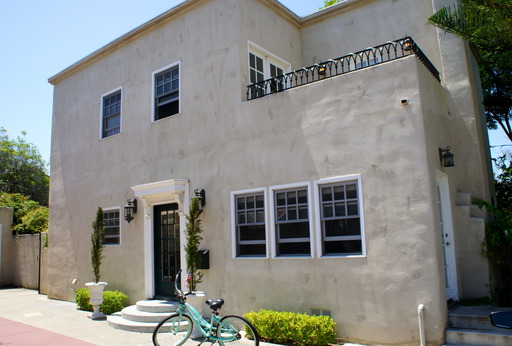
A firestorm has erupted in the construction and real estate community over the role the Design Review Commission could play in residential development. Many contend that under the proposed rules every new home will have to pass muster with the commission.
The notion is being fueled by a section of Residential Standards Improvement Program-3 (RSIP-3) subcommittee recommendations that suggest a greater role for the commission in allowing contractors to build houses that reach the maximum floor-to-area ratio (FAR). The FAR is a criteria used in determining the size of a house than can be built on a given lot.
“It will be similar to the demolition permit process for homes that are 75 years or older,” said Renee Wilson, a realtor and member of the RSIP-3 Subcommittee. A demolition permit cannot be issued for house that is 75 years or older without approval from the Historic Resource Commission.
Having a project go to design review would “add time and cost to any project,” John O’Brien of Flagship Properties said. He estimates that taking a project to design review would cost an additional $3,500.
In reality the role of design review proposed by the RSIP-3 committee is more limited, and complicated. People building a single-family home in the R-3 (multi-family) zone with a maximum FAR would have to have design review approval.
In the past people could build to maximum FAR by adding design features. People can still do that, but will have to take an extra step having the whole project approved by design review.
This only applies to the multi-family zones where homeowners want to build to maximum FAR. “You can build to half or even three-fourths without having to go to design review,” said Dorothy Howard, vice chair of the subcommittee.
“This really is an inducement to get people to build smaller homes,” Councilwoman Carrie Downey said. “This would not take away a homeowner’s rights to get additional FAR points by incorporating certain design features, but it will require extra time and work of seeking design review approval.”
Going to design review is voluntary for people in neighborhoods zoned for single-family dwellings only.
“People have always been able to take a project to design review as a way to get to maximum FAR,” Howard pointed out. “The difference now is that instead of one point, they’ll be able to get four points.”
The rules for the design elements themselves have been revised and scaled down. “All those that don’t reduce the appearance of bulk and mass have been eliminated,” Howard said. “You can no longer plant a sapling or slap a solar panel on the roof to build a bigger house than the rules allow.”
The goal of this and other changes to the city’s design standards was to reduce bulk and mass, especially on two-story homes. “The height of a house needs to be kept in relation to how wide it is and how much of a shadow it makes,” Howard said.
To that end, the committee placed a number of restrictions, including a lower maximum FAR, a second story setback, and a “daylight plane” between houses. The daylight plane is an imaginary line that extends 18 feet along both side property lines and angles up 45 degrees toward the center of the lot.
They were also designed to “incentivize maintaining privacy for neighbors, by limiting overhangs and rooftop decks,” Downey said.
People building a deck with 14 feet or more of walking space will have to get permission from design review. This does not apply to antennas or mechanical equipment screened behind solid walls and under 40 square feet and two feet from the exterior wall.
These efforts to provide breathing space and privacy is not sitting well with contractors and realtors.
“I’m disappointed,” O’Brien said. “These restrictions are going to drastically redesign the city and change the character of the community.”
He ticked off a number of homes he has built that could not be built under the proposed rules, including a houses at 100 Ocean and 721 Tolita. “This is also going to affect home sales,” he said.
Wilson agreed. “Many of the houses in Coronado are older. Eighty-five percent of homebuyers want to be able to tear the house down and build something bigger.” The new recommendations will make that process more difficult and may keep buyers away. “It’s going to have an economic impact,” she said.
O’Brien thinks the committee should hold another public workshop to give people an opportunity to see the plans and comment on them. After three years, bi-monthly workshops and an online survey, another workshop doesn’t seem likely.
Still, contractors, realtors and residents will have an opportunity to voice their views on RSIP-3 Committee recommendations at the May 3 city council meeting.




